Can you put Neosporin on your dog? Scouting Out the Positives and Negative

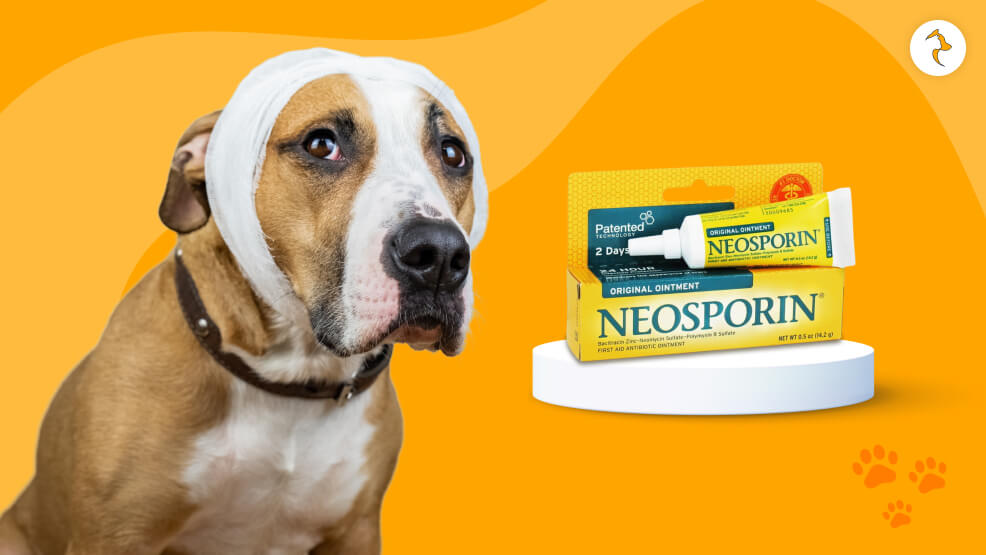
As an animal owner, instinctively, the question is likely to come to mind – what to do to give them aid when they accidentally get minor abrasions, like cuts, scratches, or scrapes.
Humans would often know of a product designed to avoid infection combined with healing-promotion: Neosporin. But for a dog, what’s allowed?
Can you put Neosporin on your dogs? Although Neosporin may serve as the first line of defense against minor human injuries, the same issues persist when Neosporin is apply to dogs.
The article will answer if Neosporin is safe for dogs, how to use it, potential risks and side effects, and when to seek alternative measures.
What is Neosporin?
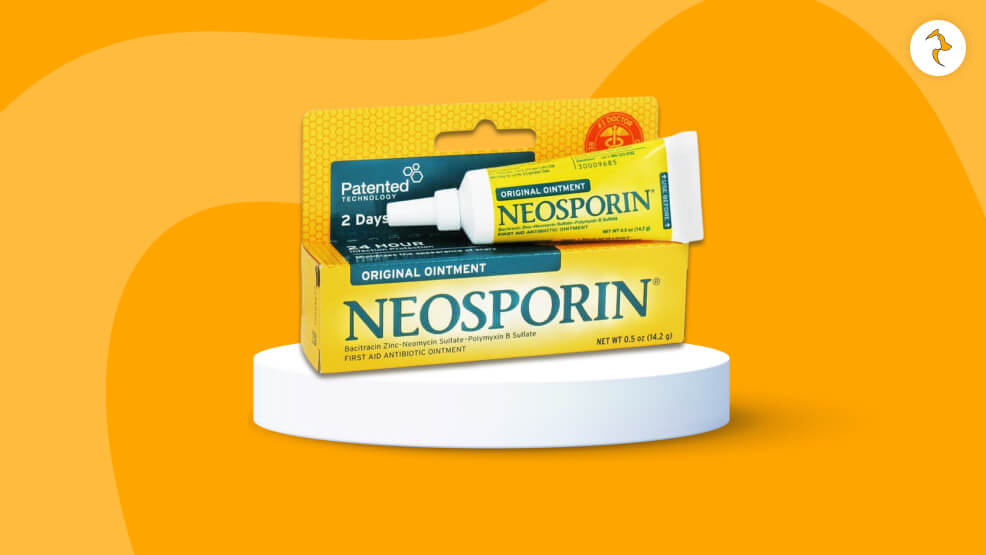
Neosporin is a nonprescription antibiotic cream for minor wounds, cuts, scrapes, and burns. The drug contains three main active ingredients that synergistically work to facilitate recovery from infections by bacteria in the body. These are:
1. Neomycin
An antibiotic, acting as a bacteriostatic agent, hence an inhibitor to bacteria. It stops the proliferation of infections in minor wounds.
2. Polymyxin B
It is also an antibiotic used in treating various bacterial infections due to broad-spectrum action. It can complement neomycin.
3. Bacitracin
The antibiotic inhibits bacterial infection. This antibiotic inhibits Gram-positive bacteria. The above blend of antibiotics yields better wound healing and recovery, hence fewer complications relating to the minor wounds or cuts/abrasions of the dog’s skin undergoing the Neosporin treatment.
You may wonder if Neosporin, available for humans, can you put Neosporin on your dogs. The short answer is that Neosporin is usually safe for application on dogs, but some factors need to be considered.
4. Non-toxic in small amounts
Neosporin is not toxic to dogs when administered at low doses. However, one should administer as small an amount as possible and allow the dog to lick it off so that the dog can ingest a toxic amount, causing gastrointestinal irritation by either vomiting or diarrhea.
This is all the more dangerous because of the tendency of a dog to lick either its wound or even an ointment applied to the skin.
5. Response of the skin to the constituents apply when applying Neosporin
Although Neosporin is not poisonous to most dogs when applying Neosporin, there might be one ingredient to which dogs get allergic or sensitive.
The reaction would range from redness and swelling, itching, etc., on the application site. If there’s some irritation within your dog soon after you apply Neosporin, it must be withdrawn immediately, along with making direct contact with your veterinarian.
6. Visit a veterinarian
To answer your question can you put on Neosporin on your dogs, but the best way to discuss using it on your dog is with your veterinarian, especially if the dog has some kind of skin sensitive, allergies, or other medical conditions. Your vet may recommend a better ointment or treatment for your dog based on the condition.
Is Neosporin Safe for Dogs? Safe Scenarios for Using Neosporin
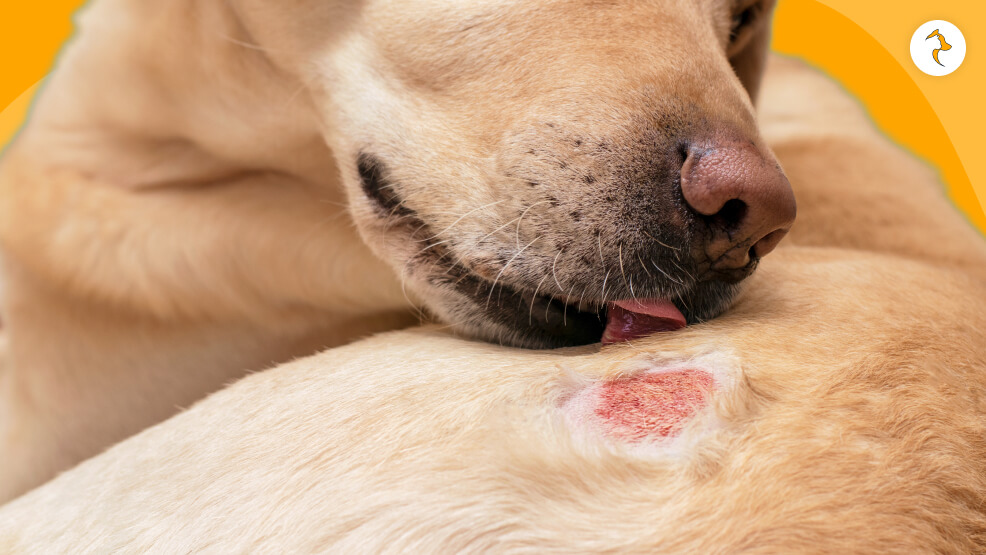
There are some scenarios where Neosporin will prove appropriate and safe topical medication for your dog’s wounds. The scenarios happen every day without fail, and Neosporin will most probably apply in the following scenarios:
1. Minor cuts and scrapes
Neosporin is fantastic for small wounds that are not deep and not bleeding. For instance, when your dog scrapes his paw on rugged ground or nicks his paw while playing outdoors, Neosporin will stop the infection from coming into the wound, thus helping heal it fast.
2. Superficial abrasions
In superficial abrasions, the antibiotics in Neosporin prevent bacteria from reaching the infected wound. Examples are wounds cause by scratching off little pieces of skin that do not need stitches since they might heal.
3. Minor Burns
Minor burns, like when your dog touches something hot because of your mistake, can be handled using Neosporin.
This medicine will ensure that the region remains infection-free as your dog continues to calm down the area on his skin. However, deep burns need professional care at the vet.
4. Aftercare of Surgery
After a minor surgery, your vet may recommend the use of Neosporin at the spot of incision to decrease the chances of infection.
Neosporin can use if your dog has undergone minor surgery such as tooth extraction, abscess drainage, or spaying/neutering. Regardless, never forget to follow the advice of your vet regarding wound care after surgery.
Potential Risks and Side Effects
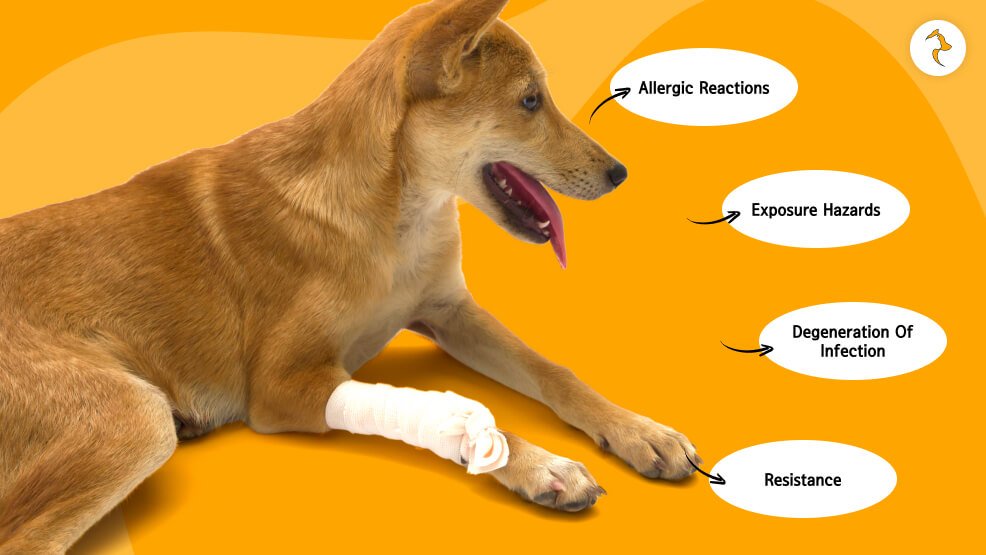
Even though Neosporin is a very effective drug for small wounds, it is still a medicine with potential risks and side effects, including the following:
1. Allergic reactions
These may be experience with any ingredients in Neosporin but more often with neomycin. Look out for signs that are:
- Redness or rash
- Swelling or hives
- Severe itchiness
- Pain or soreness around the affected area
You should discontinue using Neosporin if these symptoms arise due to application in your dog. Rinse it with warm water and a mildly abrasive soap, and contact your veterinarian for additional direction, which can include alternative care.
2. Exposure hazards
This could lead to a portion of the Neosporin intake when your dog finds some applicable sites on him that he can lick. Distractibility and the instinct to lick can, although not fatal, take little from toxicities and ingestions alone.
A large amount of ingestion volume does upset the dog’s stomach, often into vomiting or diarrheas/loss of appetite. If the dog licks some of the ointment on his wound away, keep an eye out for aversions, even nausea, in your dog.
3. Degeneration of infection
Neosporin prevents minor infections and may not stop all forms of bacteria from acting in an infection; however, a change in your dog’s symptoms, such as an injury that is worsening and now inflamed.
It has an appearance of pus or feels hot over the injured area, results in a visit to the veterinarian since Neosporin may need a stronger antibiotic or another treatment.
4. Resistance
Too many topical antibiotics, such as Neosporin, form resistant bacteria. This happens very often when too much ointment has been applied, or it’s applied to very dirty wounds.
Antibiotic resistance is one of the major complications in both human and veterinary medicine. Use Neosporin when necessary and in small amounts.
How to Apply Neosporin on a Dog
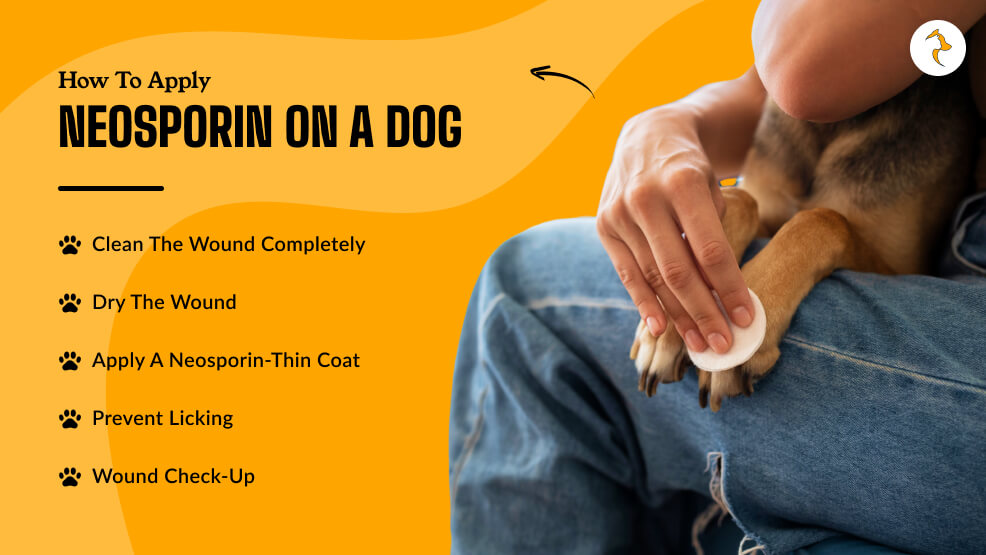
If your veterinarian allows you to apply Neosporin to your dog, here is how you do it.
1. Clean the wound completely
Clean the wound before applying Neosporin. This prevents the wound from becoming re-contaminated. Use lukewarm water and a mild pet-safe antiseptic solution or just use saline to clean away dirt and bacteria from the wound. Clean the wound and remove any debris from the wound.
2. Dry the wound
The color of the region is allowed to dry with either a clean cloth or a gauze pad before the ointment is applied. Do not rub it as it is sore. The surface of it had to be dry for the effective sticking of the ointment.
3. Apply a Neosporin-thin coat
Apply a thin layer of Neosporin to the infected area using a clean fingertip or cotton swab. Only a small amount is needed because if too much is applied, it might cause irritation or make your dog want to lick it off.
4. Prevent licking
One of the major challenges with the application of topical ointment to dogs is making them stop licking those places where they are treated. Licking douses the medication efficacy besides leaving them an access for ingestion avenue.
Fit onto your dog with an Elizabethan collar, better known as a “cone,” where which will stop you from licking his wounds when he has completely healed them.
5. Wound check-up
Monitor the wound daily to determine if it is healing or not. Watch out for possible infection or other complications. If, after several days, the wound fails to heal or develops, call your vet for a follow-up consultation.
Do Not Use Neosporin Under These Conditions
There are circumstances wherein you won’t apply Neosporin on your dog. The following are scenarios wherein you must refrain from applying the ointment:
1. Deep or wide wounds
Neosporin is used for minor, superficial injuries. When your dog experiences an injury greater than the surface of the skin, such as a cut or wide laceration requiring sutures, it is time to take your dog to the vet for proper care. Larger injuries will require more serious care in the form of sutures, drainage, and/or oral antibiotics.
2. Eye injuries
Never use Neosporin on the eyes; it irritates and could cause full-blown ones. Do, however, call a vet immediately if the wounds are direct to the eyes. It will depend on that sometimes.
3. General allergy to products
Do not use Neosporin if your dog reacts to neomycin or other ingredients in the ointment. Seek an alternative from your veterinarian for its safe application to your dog.
4. Wound infection
Neosporin is unlikely to do anything to cure an infection once it has occurred in a wound. Wounds infected will probably require oral antibiotics or some other specific drug. If your dog shows any signs of wound infection – pus, redness, or swelling – have your dog checked by a veterinarian.
Neosporin Alternatives
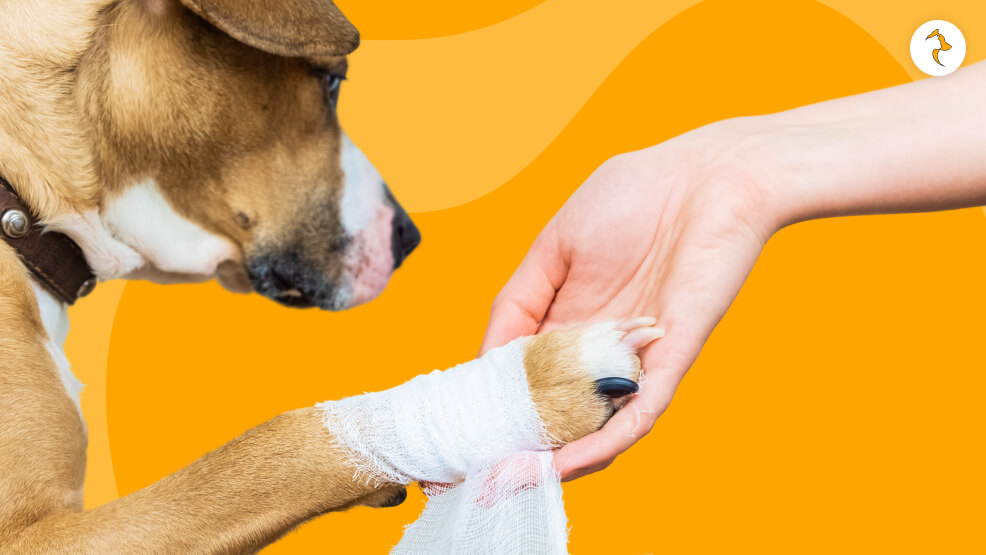
In case you do not feel you could apply Neosporin to your dog, or if it isn’t suited for the specific issue your pet is suffering from, these are safer alternatives:
1. Vetericyn and its variants
There are balms available in pet shops specifically for dogs: Vetericyn and Sarna. Overall safer and sometimes quite a bit more effective compared with human-derived remedies.
2. Aloe vera
The soothing property of aloe vera gel is mild to your dog’s skin. It is safe for minor cuts, burns, or irritations.
3. Coconut oil
The antimicrobial property in coconut oil prevents wound infection and encourages healing. Being non-toxic, it is safe for your dog to lick and can be used on pets that lick their wounds.
4. Pet-safe antiseptic solutions
They include antiseptics such as solutions containing Betadine or chlorhexidine that will clean and disinfect the wound without exposing the pets to antibiotic side effects.
5. Hydrocortisone cream
The count of application time though your dog’s wound seems a bit itchy and inflamed. A small quantity of hydrocortisone cream applied without any mixture might be worth trying to find some relief against your dog’s discomfort. Check with your veterinarian before applying other steroid-based dog creams.
Wrapping Up!
Neosporin can be a safe and effective topical application for small cuts, scrapes, and abrasions in a dog, but it is important to do it correctly with caution. Any human drug is available only after personalized advice from a veterinarian for your pet according to his condition.
Take professional veterinary care when your dog’s wound fails to heal or worsens. That way, to know that can your put Neosporin on your dog heals comfortably and well with the proper techniques and alternatives of application.








Leave A Comment